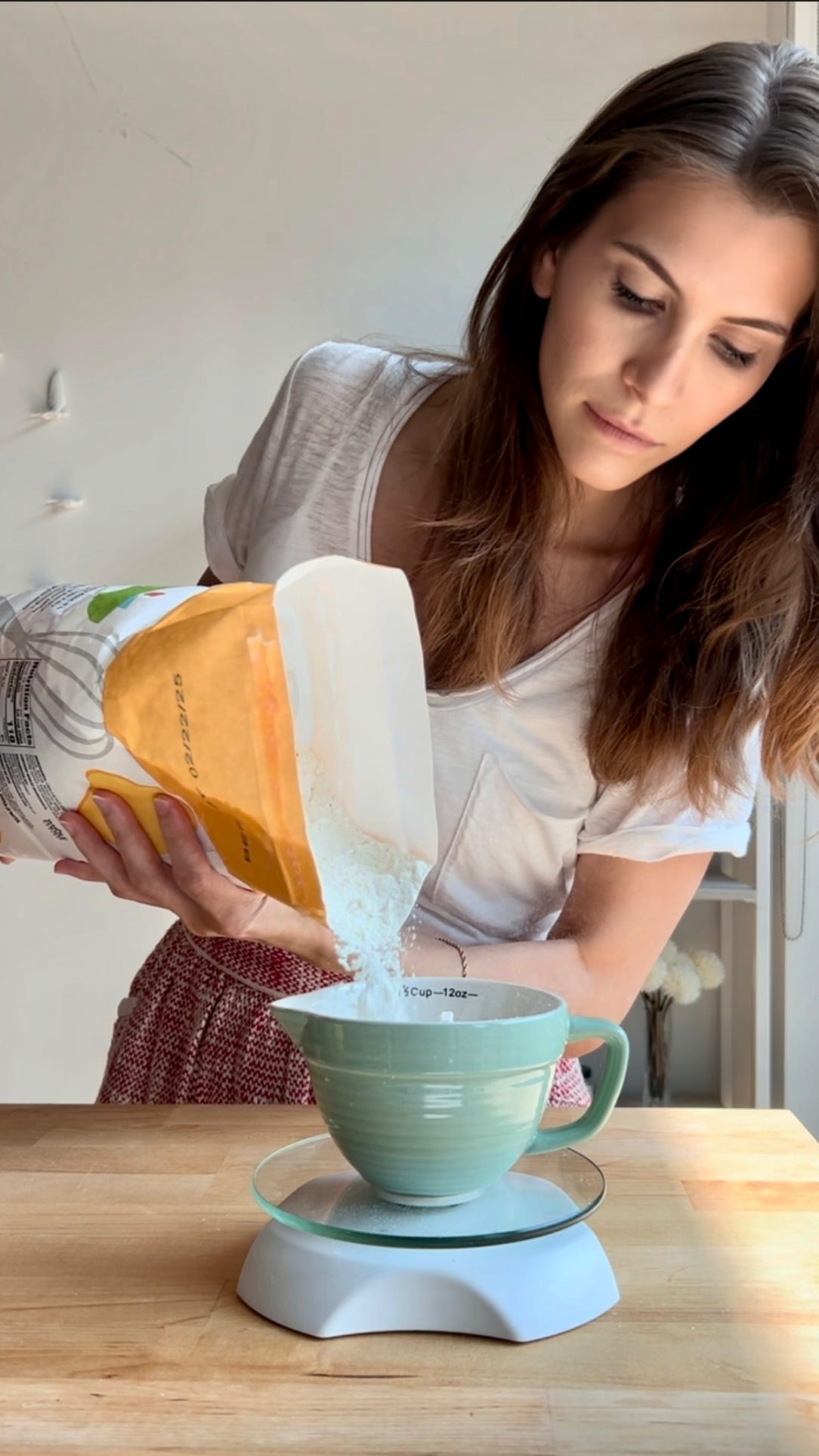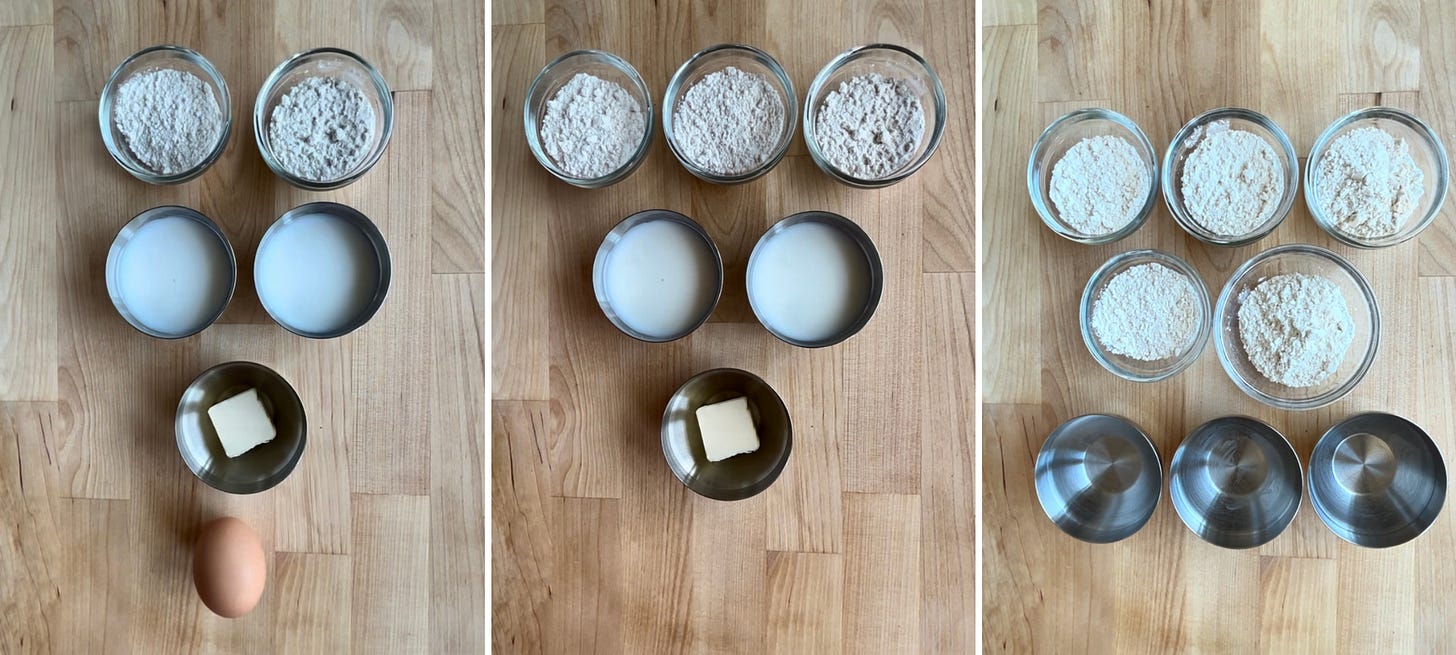🧮 What Are Baking Ratios (and Why Do They Matter)?
How Ratios Make Cakes Soft, Cookies Chewy, and Bread Perfect
Baking has always fascinated me because it’s both a science and a kind of math you can taste. Before we had detailed recipes and universal measurements, bakers relied on ratios—simple proportions of flour to sugar, fat to liquid—to guide their creations. These ratios were their secret language, passed down from generation to generation, allowing them to create bread, cakes, and pastries that turned out beautifully even without scales or measuring cups.
Ratios are the hidden formulas that keep your cakes fluffy, cookies chewy, and breads beautifully risen. Once you understand them, you’re no longer just following instructions—iit gives you the power to experiment, tweak, and invent your own baked goods with confidence.
🧮 What’s a Ratio?
Ratio = Weight of one ingredient ÷ Weight of another ingredient
Sugar : Flour = 320 ÷ 300 = 1.07
That tiny number tells us a lot: when sugar slightly outweighs flour (like 1.07), the cake will be soft, tender, and melt-in-your-mouth. Ratios like this are the magic behind every successful bake—and once you understand them, you can start tweaking and experimenting with confidence.
👉 Quick Examples:
200 g (1 ½ cups) flour : 100 g (7 tbsp) butter = 2:1 flour-to-fat
320 g (1 ½ cups) sugar : 300 g (2 ½ cups) flour = 1.07:1 sugar-to-flour
Why Ratios Matter
Ratios are the cheat codes of baking—the secret formulas that explain:
Why bread is chewy 🥖
Why cookies spread 🍪
Why cakes are soft 🎂
The Science Behind the Numbers
Flour = structure → too much = tough, too little = collapse
Sugar = tenderizer → pulls in water, softens texture
Fat = richness → coats flour, melts in your mouth
Eggs = glue → proteins set, water adds lift
🎂 Spotlight: High-Ratio Cakes
Ever seen the term high-ratio cake? It means the sugar actually outweighs the flour. Sugar weakens gluten and holds onto water, so the cake bakes up tender and moist. That’s why birthday cakes melt in your mouth, while bread is sturdy and chewy.
📊 When sugar ≥ flour → super tender cake.
Example:
300 g (2 ½ cups) flour
320 g (1 ½ cups) sugar
🥖 Ratios You Can Memorize
📌 Save this list for quick reference:Keep this cheat sheet handy:
Bread → 5 flour : 3 water
500 g (4 cups) flour + 300 g (1 ¼ cups) water = 60% hydration
Cookies → 3 flour : 2 fat : 1 sugar
300 g (2 ½ cups) flour + 200 g (14 tbsp) butter + 100 g (½ cup) sugar
Muffins → 2 flour : 2 liquid : 1 egg : 1 fat
200 g (1 ½ cups) flour + 200 g (¾ cup) milk + 1 egg + 100 g (7 tbsp) butter
Pâte à Choux → 2 liquid : 1 flour : 1 egg : 1 fat
200 g (¾ cup + 2 tbsp) water + 100 g (¾ cup) flour + 2 eggs + 100 g butter
🥄 Test This at Home: 1-2-3 Cookie Dough
📏 Formula: 1 sugar : 2 butter : 3 flour
Example:
100 g (½ cup) sugar
200 g (14 tbsp) butter
300 g (2 ½ cups) flour
= classic shortbread.
✨ Want to experiment?
Add an egg → softer texture
Swap butter for oil → crisper bite
Adjust sugar slightly → sweeter or mild
Same ratio → endless variations.
✨ Takeaway
Ratios are the math behind the magic. They explain why recipes work (or don’t!) and give you confidence to riff, tweak, and invent.
👩🔬 Want More?
Want to learn more? Have a questions? Reply and let me know—I always love talking about the science behind baking.
Stay Sweet,
Sarah @HalfBatchBaking






Very helpful
So helpful. Thank you!